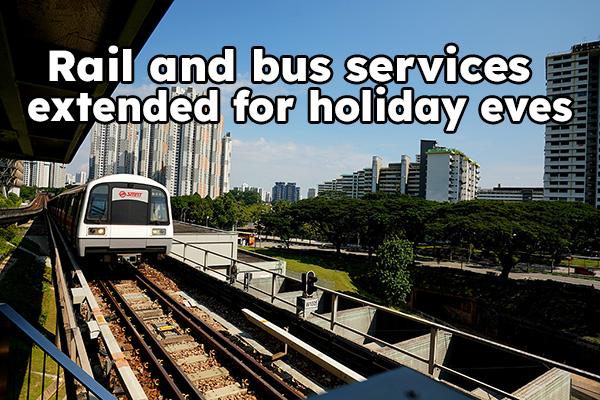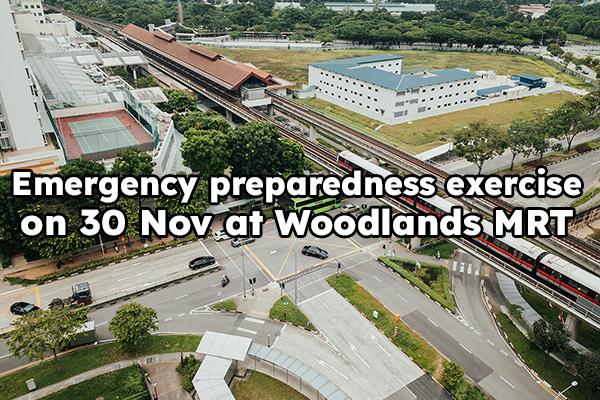SMRT Trains posts loss of $86m in FY2018
02 Jul 2018|2,574 views
In the financial year ending 31st March, trains on the East-West Line travelled about 13 percent longer on average before encountering a delay of more than five minutes.
The Circle Line more than doubled its mean kilometres between failures, compared with the previous financial year.
But while reliability is up, the finances are in the red. In its annual operations review report published yesterday evening, SMRT Trains posted an after-tax loss of $86 million in FY2018, on the back of lower ridership and fare revenue, coupled with higher maintenance-related expenses. In the previous financial year, SMRT Trains made an after-tax profit of $26 million.
Operating expenses for FY2018 hit $838 million, up by seven percent from $785 million in the previous financial year. Meanwhile, revenue dipped by six percent, falling from $791 million to $743 million. This was due to lower average fares arising from a fare reduction exercise, as well as a two percent drop in total ridership on SMRT's network, from 768 million to 753 million.
Last year, the North-South and East-West lines saw a drop in ridership, and experts have said this could be due to the opening of the Downtown Line 3 last October, which offered commuters alternative travel routes to the eastern part of Singapore.
The growing popularity of private-hire car services and the service disruptions on the North-South Line, due to teething issues from the implementation of the new signalling system, were also cited as factors why fewer commuters took the train.
SMRT Trains also said more than half of every dollar it collects from commuter fare revenue now goes to rail maintenance-related expenditure. "This refers to rail maintenance staff costs, parts and material costs, depreciation of rail assets and other rail maintenance-related operating expenses," it said.
Asked about SMRT Trains' losses, Singapore University of Social Sciences Transport Economist Walter Theseira said, "The issue with a public transport company is that the firm can't really raise revenue except by asking for fare increases. Ridership isn't something they can affect directly. So I expect that if this loss continues, we may need government subsidies to keep the system operational."
Singapore Management University's Assistant Professor Terence Fan, who specialises in transport, said the increased maintenance costs are due to a conscious effort to speed up upgrades, which may be temporary, and may not necessarily be the new normal.
In the financial year ending 31st March, trains on the East-West Line travelled about 13 percent longer on average before encountering a delay of more than five minutes.
The Circle Line more than doubled its mean kilometres between failures, compared with the previous financial year.
But while reliability is up, the finances are in the red. In its annual operations review report published yesterday evening, SMRT Trains posted an after-tax loss of $86 million in FY2018, on the back of lower ridership and fare revenue, coupled with higher maintenance-related expenses. In the previous financial year, SMRT Trains made an after-tax profit of $26 million.
Operating expenses for FY2018 hit $838 million, up by seven percent from $785 million in the previous financial year. Meanwhile, revenue dipped by six percent, falling from $791 million to $743 million. This was due to lower average fares arising from a fare reduction exercise, as well as a two percent drop in total ridership on SMRT's network, from 768 million to 753 million.
Last year, the North-South and East-West lines saw a drop in ridership, and experts have said this could be due to the opening of the Downtown Line 3 last October, which offered commuters alternative travel routes to the eastern part of Singapore.
The growing popularity of private-hire car services and the service disruptions on the North-South Line, due to teething issues from the implementation of the new signalling system, were also cited as factors why fewer commuters took the train.
SMRT Trains also said more than half of every dollar it collects from commuter fare revenue now goes to rail maintenance-related expenditure. "This refers to rail maintenance staff costs, parts and material costs, depreciation of rail assets and other rail maintenance-related operating expenses," it said.
Asked about SMRT Trains' losses, Singapore University of Social Sciences Transport Economist Walter Theseira said, "The issue with a public transport company is that the firm can't really raise revenue except by asking for fare increases. Ridership isn't something they can affect directly. So I expect that if this loss continues, we may need government subsidies to keep the system operational."
Singapore Management University's Assistant Professor Terence Fan, who specialises in transport, said the increased maintenance costs are due to a conscious effort to speed up upgrades, which may be temporary, and may not necessarily be the new normal.
Latest COE Prices
May 2025 | 1st BIDDING
NEXT TENDER: 21 May 2025
CAT A$103,009
CAT B$119,890
CAT C$62,590
CAT E$118,889
View Full Results Thank You For Your Subscription.





















